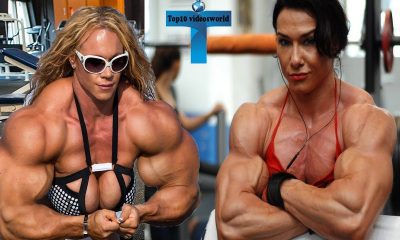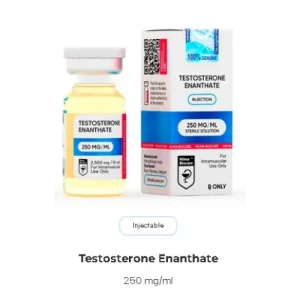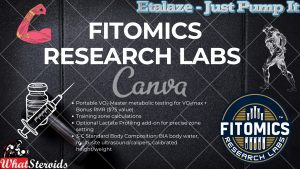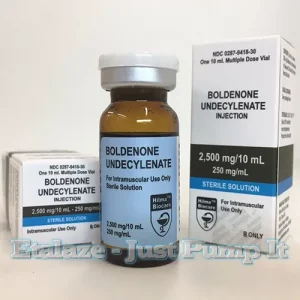Bodybuilding
Right Food Before And After Workout
Nutrition in bodybuilding is a very important aspect, which is often ignored, especially by beginner bodybuilders. If you go to the gym just to maintain you fit or with no special goal, then what you eat and when you eat should not bother you at all. Instead, if all your training are geared toward adding muscle mass, then nutrition is an aspect that has to be considered very seriously.
It is not an exaggeration if we said that nutrition is even more important than training itself. Why so? Because to muscle mass will increase only due to positive energy balance. Overwise, you can work hard in the gym, but no results in muscle growth will be achieved.
This is impossible physiologically. You have to understand only balanced and protein-rich food, that provided your body with a sufficient amount of carbohydrates can give you an increase in muscle mass. Positive energy balance does not suppose that you can eat everything. It especially refers to fact that calories you eat should exceed the number of calories you burn.
Also, is indicated to avoid saturated fat, for example, meat. If you want to add muscle mass you have to include in your diet supplements too. They are especially important because are free of fat, and sugar. Instead, supplements contain a lot of protein, carbohydrates, and vitamins.
So, a diet for building muscle mass have to be rich in protein fats and carbohydrates. However, be wise and take care do not turn your diet for building muscle mass into adding only fat. It is te to know that adding muscle mass is always associated with adding a percentage of body fat too. Our body tends to do fat reserves in case of a rich diet. So, building muscle mass and losing weights meantime is not possible.
Your goal has to be to gain minimum fat while adding big amounts of muscle mass. The best correlation between the percentage of muscle mass and fat should be three to one. But this report deeply depends on specific of metabolism of each person. There are people with a super fast metabolism, able to add maximum muscle mass with minimum fat, while others with a slow metabolism get more fat than muscle mass after following a rich diet.
Despite it may seem quite easy, bodybuilders have to be very careful about what they eat before and after the workout. It may seem that the protein-rich diet is the only you have to follow, but it is not the case. Setting up a special diet before and after a workout is very important since around this period your body requires high quality, fast digesting food for fast recovery and effective muscle growth. If you are enough smart to take advantages of this window, you can maximize your strength and muscle mass gains from each workout.
Must Read: 4 Meals with Most Protein to Take If You are Body Builder
Pre-workout Nutrition Plan

The first rule is to eat at least two hours before your workout. And we do not mean a very consistent food, but a medium food rich in protein and carbohydrates, and free of any type of fat. Less indicated are wheat products or sweets, while a portion of rice with chicken breast is an ideal choice. When it comes to what is the best food to eat before a workout you have to understand what you eat has not negatively affected your training.
All the food that you eat two hours before the workout has to be digested. This is the main reason why we eat namely two hours before the training, and not one hour or even half an hour. An exception to this rule is sports supplements, that are faster and more effectively digested by our bodies. Thus supplements can be taken even one hour before the training, as they fulfill blood with all useful amino acids.
And this is especially important because when exercising our body use those useful elements from blood, not from the stomach. Furthermore, the digestion process requires energy too, thus our body needs to pump blood not only to muscles but to stomach too and this lowered the efficiency of the workout.
Right before the workout, the stomach has to be free. Bear this in mind and never underestimate this aspect, as it directly affects your workout results. Another important detail of pre-workout routine is the intake of water. Only well-hydrated people feel great when exercises and get the most from their workouts.
Try to keep your water intake around half a liter of water during 1-2 hours before the workout. Avoid drinking water or juice when you eat or right after a meal, as these actions violate the secretion of gastric juice and thus interferes with the normal process of digestion. Ensure your fluid intake between meals.
Post-workout Nutrition:

If you want to build muscle mass, then you have to know that post-workout nutrition is even more important than what you eat before training. And this is not an exaggeration, as namely after training our body reach a high-level intensity and much faster absorb all necessary nutrients. And if your body doesn't receive all these nutrients, it begins to “eat” not only fat, but muscles mass as well.
The body needs the energy to recover, and it takes amino acids from anywhere just to recover faster. So, the gold rule of post-workout nutrition says always eat something right after the training. The best option would be a protein shake 15 minutes later the training end up. This is a very smart decision because it is very fast digested and gives our bodies with all necessary amino acids and carbohydrates.
Once you take your protein shake, then look further to have a full meal 30 minutes later. This is just a supplement and can not provide you with all the necessary supplements for a long time. The basis of your nutrition should be natural food, and this is the way it should be.
Since our main goal is to build muscle mass and we want to use food mainly for this purpose, you have to know that our bodies are most active for three hours after training. Namely in this interval, if the time you have to consume around 40% of daily food intake. All you eat after training will be used by your body for refuel and muscles repair.
Remember if you will not give your body what it needs, it will take itself, damaging your muscles. And this no bodybuilder wants! Water intake after the workout has the same importance as in before it. Try to drink the same amount of water, around 0,5 liters, after the workout for faster recovery. Increasing the water intake is a must if you sweat a lot when training or the water is hot or humid. During heavy sweating body loss big quantities of minerals and electrolytes.
That’s why consider adding to your post-workout fluid intake a sport drink rich in electrolytes. Is very important to have your meals on time. Never skip breakfast or other important meal of the day. Remember to eat regularly, since pre workout and post workout nutrition is more than what you eat before/after workouts.
Must Read: Post Workout Foods: Fill Your Plate With These Ones
Summarizing the above said, here is how a right pre and post workout nutrition plan should look like:
-Have a meal two hours before the workout. Avoid wheat products and sweets, and choose food rich in protein and carbohydrates. A portion of rice with chicken breasts is a very good idea.
-Water intake before a workout is very important too. Drink 0, 5 liters of water between meals during two hours before the workout.
-Right before the training your stomach has to be free. We need our body to rush blood only in muscles and do not lose energy for digesting food.
-During the workout, you can take some BCAA’s in order to help keep your body in an anabolic state.
-Fifteen minutes later after training drink a protein shake.
-Eat a solid protein and carbohydrate meal about an hour after your workout.
-Because of heavy sweating when training, drink enough water after the workout. Also, you can opt for a sports drink rich in minerals and electrolytes.
Despite it may seem quite simple, following the right diet before and after the workout can help you to get the maximum for your workout and build muscle mass fast. So, be wise, and take advantages of the right diet for big muscles!
Must Read: Incorporating The Correct Diet Plan That Complements Your Bodybuilding Cycle!
Bodybuilding
Fueling Energy from Within: How to Build Stronger Mitochondria Through Training
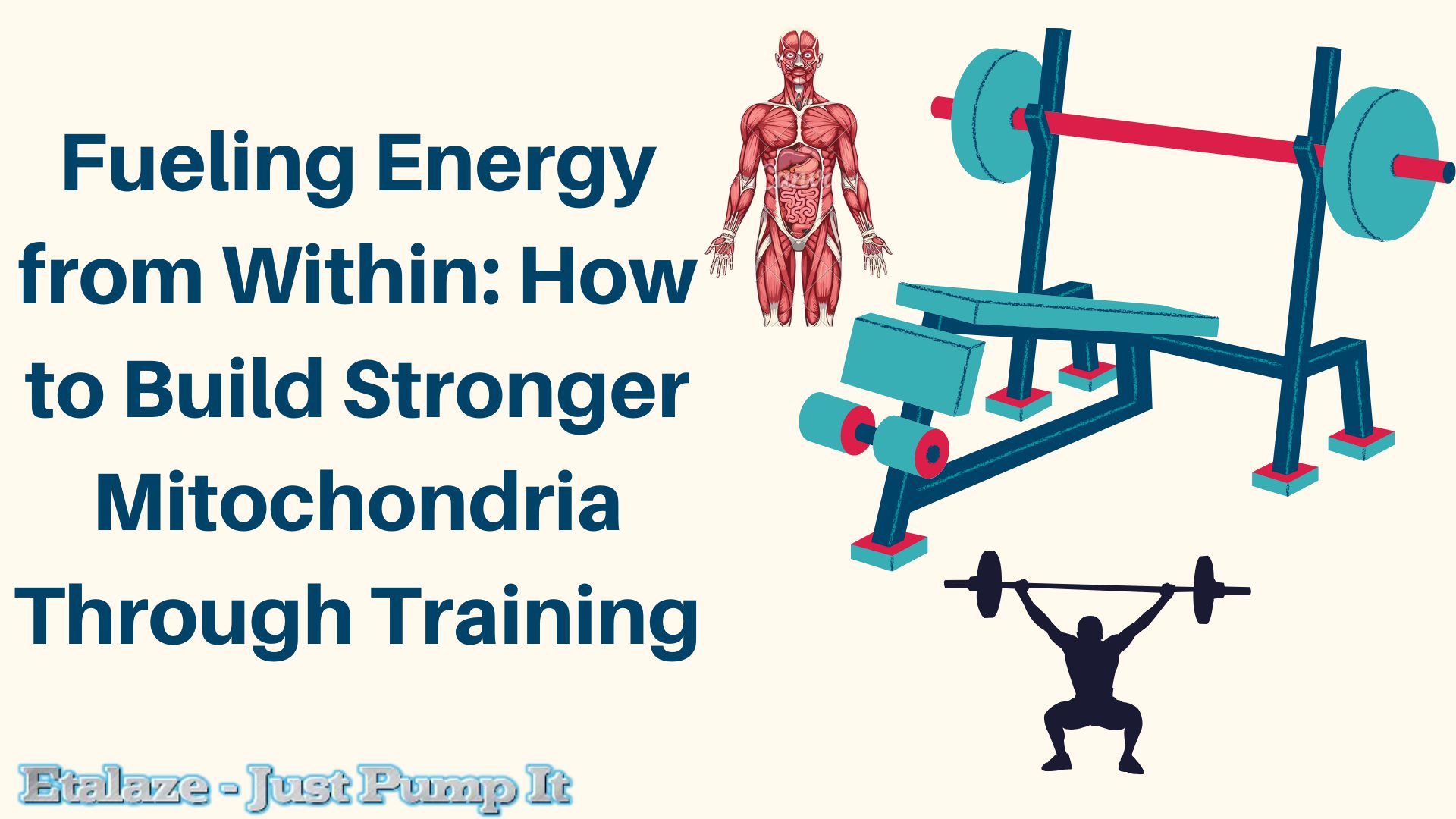
Energy is the foundation of every workout. Whether you’re grinding through heavy sets, pushing past fatigue on the treadmill, or chasing that last rep, your body’s ability to generate and sustain power determines how far you can go. At the heart of this process are mitochondria—the microscopic engines inside muscle cells that convert nutrients into usable energy. These tiny structures don’t just keep you moving; they influence endurance, recovery, and even muscle growth.
Training isn’t only about building bigger muscles—it’s about optimizing the machinery that fuels them. Exercise stimulates mitochondrial biogenesis, the creation of new mitochondria, which enhances energy production and metabolic efficiency. For fitness athletes and bodybuilders, this means longer-lasting strength during workouts, improved recovery between sets, and the ability to tap into both carbohydrates and fats for fuel. Stronger mitochondria help delay fatigue, sharpen focus, and support lean muscle development by ensuring nutrients are used effectively.
But the path to stronger mitochondria goes beyond the gym floor. Nutrition rich in antioxidants, adequate protein intake, quality sleep, and stress management all play vital roles in protecting and enhancing these cellular engines. When combined with smart training strategies—whether endurance cardio, high-intensity intervals, or resistance work—these lifestyle factors create a powerful synergy that elevates performance.
Mitochondria and Muscle Hypertrophy
When it comes to bodybuilding, most people think about lifting heavier weights, eating more protein, and pushing for progressive overload. Yet beneath the surface of every rep lies a cellular powerhouse that makes hypertrophy possible: the mitochondria. These tiny organelles are responsible for producing adenosine triphosphate (ATP), the energy currency that fuels muscle contractions. Without efficient mitochondria, even the most disciplined training program stalls because the body cannot sustain the energy demands required for growth.
Muscle hypertrophy—the enlargement of muscle fibers—depends on repeated cycles of stress, recovery, and adaptation. During intense resistance training, mitochondria ramp up ATP production to meet the immediate energy needs of contracting fibers. But their role doesn’t end there. Post-workout, mitochondria help regulate recovery by supporting protein synthesis, repairing damaged tissue, and clearing metabolic byproducts such as lactate. This recovery process is critical: hypertrophy occurs not during the workout itself, but in the rebuilding phase that follows.
Related Article: Top 7 Superfoods For Building Muscle Mass
Stronger, more numerous mitochondria also improve muscular endurance. While hypertrophy is primarily driven by mechanical tension and metabolic stress, the ability to sustain higher training volumes without premature fatigue allows bodybuilders to push harder and longer. Enhanced mitochondrial density means better oxygen utilization and fat oxidation, which reduces reliance on glycogen alone. This balance helps athletes maintain lean mass while minimizing fat accumulation—a key goal in bodybuilding aesthetics.
Training methods such as high-intensity interval training (HIIT), moderate-intensity “Zone 2” cardio, and metabolic conditioning can complement heavy lifting by stimulating mitochondrial biogenesis. When combined with proper nutrition—adequate protein, micronutrients like magnesium, and mitochondrial-supportive compounds such as CoQ10—bodybuilders create an internal environment where energy production and muscle growth work hand in hand.
Generally, hypertrophy isn’t just about lifting weights; it’s about empowering the cellular engines that make growth possible. By strengthening mitochondria, bodybuilders unlock greater energy, faster recovery, and more sustainable muscle gains.
Must Read: Primal Movements: Our Ultimate Guide for Maximum Results
Strength vs. Endurance Balance
Bodybuilding is often associated with heavy weights, low repetitions, and the pursuit of maximum muscle size. Yet, the balance between strength and endurance training plays a critical role in optimizing performance and long-term gains. While strength training primarily targets muscle hypertrophy through mechanical tension and progressive overload, endurance training enhances mitochondrial density and efficiency, ensuring that muscles can sustain effort and recover more effectively.
Strength-focused workouts rely heavily on anaerobic energy systems, which deliver quick bursts of ATP but also generate metabolic byproducts that contribute to fatigue. Without a strong aerobic foundation, bodybuilders may struggle with recovery between sets or find themselves limited in training volume. Endurance training, particularly at moderate intensities, strengthens the aerobic system by improving oxygen utilization and fat oxidation. This not only supports longer workouts but also helps maintain a leaner physique by reducing reliance on glycogen alone.
The key lies in integration rather than choosing one over the other. Incorporating short bouts of high-intensity interval training (HIIT) or steady-state cardio alongside resistance training can stimulate mitochondrial biogenesis without compromising muscle growth. Periodization strategies—alternating phases of strength emphasis with endurance conditioning—allow athletes to maximize hypertrophy while building resilience.
Ultimately, the balance between strength and endurance ensures that bodybuilders are not just bigger, but also more efficient, better recovered, and metabolically healthier. By training both systems, athletes unlock the full potential of their muscles, combining raw power with sustained energy for superior performance.
Recovery and Reduced Fatigue
Progress is built not just in the gym but in the hours that follow. Recovery is where muscle fibers repair, adapt, and grow stronger. Mitochondria play a central role in this process by managing energy availability and clearing metabolic waste, which directly impacts how quickly athletes bounce back from intense training.
During heavy lifting, muscles rely on anaerobic energy pathways, producing lactate as a byproduct. Accumulation of lactate and hydrogen ions contributes to the familiar “burn” and eventual fatigue. Well-trained mitochondria help buffer and recycle these metabolites, converting lactate back into usable energy through oxidative pathways. This reduces soreness and allows bodybuilders to recover faster between sets and sessions.
Efficient mitochondria also support protein synthesis during recovery. By generating ATP consistently, they provide the energy needed for repairing microtears in muscle fibers and building new tissue. This means that athletes with stronger mitochondrial function can sustain higher training volumes without compromising recovery quality.
Beyond the cellular level, improved mitochondrial capacity enhances overall resilience. Better oxygen utilization and fat oxidation reduce reliance on glycogen, sparing muscle energy stores and minimizing exhaustion. This translates into steadier performance across long workouts and quicker readiness for the next session.
Integrating endurance-based conditioning, adequate sleep, and nutrient support—such as antioxidants and omega-3 fatty acids—further boosts mitochondrial recovery pathways. For bodybuilders, this synergy means less downtime, reduced fatigue, and more consistent gains. In essence, mitochondria are the silent partners ensuring that every rep pays off long after the workout ends.
Fat Utilization and Lean Physique
Achieving a lean and defined physique is just as important as building muscle mass. While resistance training drives hypertrophy, the efficiency of mitochondria determines how effectively the body utilizes fat as a fuel source. Stronger mitochondria enhance oxidative metabolism, allowing muscles to burn fat more readily during both exercise and rest. This shift toward fat oxidation not only spares glycogen for high-intensity efforts but also supports the reduction of excess body fat, leading to sharper muscle definition.
When mitochondrial function is optimized, the body becomes more metabolically flexible—able to switch between carbohydrate and fat fuel sources depending on the demands of training. This flexibility is crucial during cutting phases, where athletes aim to preserve muscle while shedding fat. By relying more on fat oxidation, bodybuilders can maintain energy levels without compromising lean tissue.
Training methods such as Zone 2 cardio (moderate-intensity sessions that maximize fat burning) and metabolic conditioning workouts stimulate mitochondrial biogenesis, expanding the body’s capacity to use fat efficiently. Combined with strength training, these approaches create a dual benefit: muscle growth supported by resistance work and fat reduction driven by improved mitochondrial function.
Nutrition also plays a key role. Diets rich in healthy fats (omega-3s, monounsaturated fats), adequate protein, and micronutrients like iron and B vitamins support mitochondrial enzymes involved in fat metabolism. Together, these strategies ensure that bodybuilders not only build size but also sculpt a physique that is lean, defined, and competition-ready.
Training Techniques that Promote Mitochondria Growth
While bodybuilding traditionally emphasizes heavy resistance training for hypertrophy, incorporating specific techniques that stimulate mitochondrial growth can significantly enhance performance, recovery, and physique. Mitochondria thrive under metabolic stress, and certain training modalities are particularly effective at driving adaptations that increase both their number and efficiency.
High-Intensity Interval Training (HIIT): Short bursts of maximal effort followed by recovery periods challenge the body’s energy systems, forcing mitochondria to adapt. For bodybuilders, adding one or two HIIT sessions per week can improve endurance and accelerate fat oxidation without compromising muscle mass.
Zone 2 Cardio: Moderate-intensity aerobic training—often performed at a pace where conversation is possible—maximizes fat utilization and stimulates mitochondrial biogenesis. This type of cardio complements strength training by building a strong aerobic base, improving recovery between sets, and supporting lean muscle preservation during cutting phases.
Metabolic Conditioning (MetCon): Circuits that combine resistance and cardio elements push both anaerobic and aerobic systems simultaneously. These workouts elevate heart rate, increase lactate clearance, and drive mitochondrial adaptations while maintaining a bodybuilding focus on muscle engagement.
Periodization Strategies: Alternating phases of heavy lifting with endurance or conditioning blocks ensures balanced development. This approach prevents overtraining, maintains hypertrophy, and steadily builds mitochondrial resilience.
By blending these techniques with traditional bodybuilding routines, athletes create a training environment that not only builds muscle size but also strengthens the cellular engines powering growth. The result is a physique that is not only bigger and stronger but also more efficient, lean, and sustainable over time.
See: The Ultimate Fitness Apps
Nutrition Synergy
Training alone cannot maximize mitochondrial growth—nutrition plays an equally vital role in bodybuilding performance and physique. Mitochondria rely on a steady supply of nutrients to generate ATP, repair muscle tissue, and regulate metabolic processes. When diet and training work in synergy, bodybuilders create the optimal environment for both hypertrophy and cellular energy efficiency.
Protein and Amino Acids: Adequate protein intake is essential for muscle repair and growth, but amino acids also support mitochondrial enzymes involved in energy metabolism. Branched-chain amino acids (BCAAs) and leucine, in particular, help stimulate protein synthesis while fueling recovery.
Healthy Fats: Omega-3 fatty acids and monounsaturated fats enhance mitochondrial membrane fluidity, improving efficiency in energy transfer. These fats also reduce inflammation, supporting faster recovery and lean muscle preservation.
Micronutrients: Vitamins and minerals such as magnesium, iron, and B vitamins are critical cofactors in mitochondrial energy pathways. Iron supports oxygen transport, while magnesium aids ATP production. Deficiencies in these nutrients can impair both performance and recovery.
Antioxidants: Intense training generates oxidative stress, which can damage mitochondria. Nutrients like vitamin C, vitamin E, and compounds such as CoQ10 help neutralize free radicals, protecting mitochondrial integrity and sustaining long-term function.
Timing and Balance: Strategic nutrient timing—protein post-workout, carbohydrates to replenish glycogen, and fats for sustained energy—ensures mitochondria have the resources they need at the right moments.
By aligning nutrition with training, bodybuilders not only fuel muscle growth but also strengthen the cellular engines that power every rep, set, and recovery phase. This synergy is the foundation of sustainable gains and a lean, defined physique.
Overall
Mitochondria may be invisible to the eye, but their impact on bodybuilding is undeniable. They are the engines that power every rep, every set, and every recovery phase. By strengthening mitochondrial function, athletes unlock more than just energy—they gain the ability to train harder, recover faster, and sculpt a leaner, more resilient physique.
We’ve discussed how mitochondria influence muscle hypertrophy, balance strength with endurance, reduce fatigue, and enhance fat utilization. We’ve also explored training techniques and nutritional strategies that directly support mitochondrial growth. Together, these elements highlight a simple truth: bodybuilding is not only about building bigger muscles, but also about optimizing the cellular machinery that makes growth sustainable.
The path to long-term success lies in synergy—combining heavy lifting with conditioning, fueling the body with the right nutrients, and respecting recovery. When mitochondria are nurtured, they transform the body into a more efficient, powerful, and enduring system.
In the end, focusing on mitochondrial health is about more than performance—it’s about longevity. Stronger mitochondria mean stronger muscles, but they also mean a stronger athlete overall. By fueling energy from within, bodybuilders can push past limits, achieve peak aesthetics, and sustain their gains for years to come.
Bodybuilding
Is Training/Lifting Barefoot A Good Idea? Find Out

For decades, the gym floor has echoed with the thud of cushioned sneakers, lifting shoes, and high‑tech trainers promising better stability, more power, and improved performance. Yet in recent years, a surprising shift has taken hold among serious lifters: many are kicking off their footwear entirely. What began as a fringe practice—often dismissed as quirky or unsafe—has evolved into a growing movement embraced by bodybuilders, powerlifters, and functional fitness athletes who swear that training barefoot unlocks a deeper, more natural kind of strength.
At first glance, the idea seems almost counterintuitive. After all, modern athletic shoes are engineered with layers of support, padding, and structure. But that’s exactly the point. As lifters push for better technique, stronger lifts, and more efficient movement patterns, many are realizing that all that cushioning may be doing more harm than good. By removing the barrier between foot and floor, barefoot training forces the body to engage stabilizing muscles that shoes often mute. The result? A stronger foundation, improved balance, and a more connected kinetic chain from the ground up.
Beyond performance, the barefoot trend taps into a broader shift toward natural movement and functional strength. Lifters are rediscovering the importance of foot mechanics—how the toes grip, how the arches support, and how the ankles align. These subtle details influence everything from squat depth to deadlift power. And as more athletes experiment with barefoot sessions, they’re finding that the benefits extend far beyond the feet themselves.
Of course, going shoeless in the gym isn’t just about following a trend. It’s about rethinking how we build strength, questioning long‑held assumptions, and exploring what happens when we strip training back to its most primal form. Serious lifters aren’t throwing away their shoes for style—they’re doing it for results.
Click Here to Buy Ibutamoren 50 Tabs by BodyTech
Advantages of Training Barefoot for Pro Bodybuilders
For professional bodybuilders, every detail matters—how the body moves, how muscles fire, and how efficiently force transfers through the kinetic chain. Training barefoot has emerged as a surprisingly effective way to refine these details and unlock performance benefits that shoes often mask.
One of the biggest advantages is enhanced stability. Without the interference of thick soles or elevated heels, the feet can spread naturally, creating a wider, more grounded base. This stability is crucial during heavy compound lifts like squats, deadlifts, and lunges, where even minor wobbling can compromise form or reduce power output. Barefoot training allows bodybuilders to feel the floor directly, improving balance and control under load.
Another major benefit is greater activation of stabilizing muscles, especially in the feet, ankles, and lower legs. Modern footwear often restricts natural movement, causing these smaller muscles to weaken over time. Training barefoot forces them to engage, strengthening the foundation that supports every lift. For bodybuilders, this translates to better joint integrity, improved symmetry, and reduced risk of chronic overuse injuries.
Barefoot lifting also enhances proprioception—the body’s ability to sense position and movement. With more sensory feedback from the ground, athletes can fine‑tune their technique, adjust their stance, and maintain optimal alignment throughout each rep. This heightened awareness can improve squat depth, deadlift mechanics, and overall lifting efficiency.
Must Read: The Proper Approach to Buying Steroids Online (updated)
Additionally, training without shoes encourages more natural biomechanics. The feet move freely, the arches function as intended, and the ankles maintain a neutral position. This can help correct imbalances caused by years of training in restrictive footwear, ultimately supporting better long‑term performance.
For pro bodybuilders chasing marginal gains, barefoot training offers a simple yet powerful way to build strength from the ground up—literally. It’s not just a trend; it’s a strategic tool for maximizing muscle engagement, improving technique, and enhancing overall athletic longevity.
Possible Downsides of Lifting Barefoot
While barefoot training has gained popularity among casual lifters for its “natural” feel and improved ground contact, the situation is very different for professional bodybuilders. At elite levels, athletes handle extreme loads that demand maximum stability, protection, and performance efficiency. Without proper footwear, the risks multiply — from injuries and reduced leverage to hygiene concerns and long-term joint stress. The following points highlight why barefoot lifting can be problematic for pro bodybuilders.
1. Reduced Foot Protection
Bare feet leave you vulnerable to dropped weights, sharp objects, or heavy equipment. For pro bodybuilders handling massive loads, this risk is amplified.
2. Higher Risk of Injury
Without shoes, the bones, tendons, and ligaments in your feet absorb more stress. Heavy squats or deadlifts can easily cause sprains or fractures.
3. Lack of Arch Support
Shoes provide structural support that helps prevent issues like flat feet or plantar fasciitis. Barefoot lifting removes that safeguard.
4. Instability Under Heavy Loads
Gym floors can be slippery or uneven. Shoes add grip and stability, while barefoot training increases the chance of wobbling or losing balance.
Related Article: Muscle Density Decoded: Why Hardness Beats Size
5. Reduced Performance in Certain Lifts
Olympic lifts and squats often benefit from raised heels or firm soles. Barefoot training limits leverage and can reduce maximum output.
6. Increased Stress on Ankles and Knees
Without cushioning, impact forces travel directly into the joints. Over time, this can contribute to chronic pain or injury.
7. Hygiene Concerns
Gyms are breeding grounds for bacteria and fungi. Training barefoot raises the risk of infections like athlete’s foot.
8. Limited Leg Drive in Deadlifts
While barefoot deadlifting improves ground contact, it reduces leverage compared to specialized lifting shoes designed for maximum force transfer.
9. Not Competition-Ready
Most bodybuilding and powerlifting competitions require footwear. Barefoot training doesn’t translate well to actual performance standards.
10. Potential Long-Term Damage
Repeated barefoot lifting under heavy loads can cause chronic foot problems, misalignment, and reduced career longevity.
Overall
As we mentioned earlier, training barefoot has become a trend among some athletes, but for professional bodybuilders the practice carries both potential benefits and serious drawbacks. On the positive side, lifting without shoes can improve proprioception — the body’s awareness of movement and position — which may enhance balance and stability during certain exercises. Barefoot training also strengthens the small muscles of the feet and ankles, potentially reducing reliance on supportive footwear. For lifts like deadlifts, direct contact with the floor can improve force transfer and reduce unnecessary elevation caused by cushioned soles.
However, the disadvantages are far more significant at elite levels. Bare feet lack protection against dropped weights or sharp equipment, exposing bodybuilders to severe injury risks. Without arch support or cushioning, stress is shifted to the ankles, knees, and hips, increasing the likelihood of chronic pain or joint damage. Performance in squats and Olympic lifts often suffers, since specialized shoes provide leverage and stability that barefoot training cannot replicate. Hygiene is another concern, as gym floors harbor bacteria and fungi. Finally, barefoot lifting does not align with competition standards, where footwear is mandatory.
In short, while barefoot training offers some functional benefits, professional bodybuilders face greater risks that outweigh its advantages.
Anabolic Steroids
Using Insulin Needles to Inject AAS: Pros and Cons
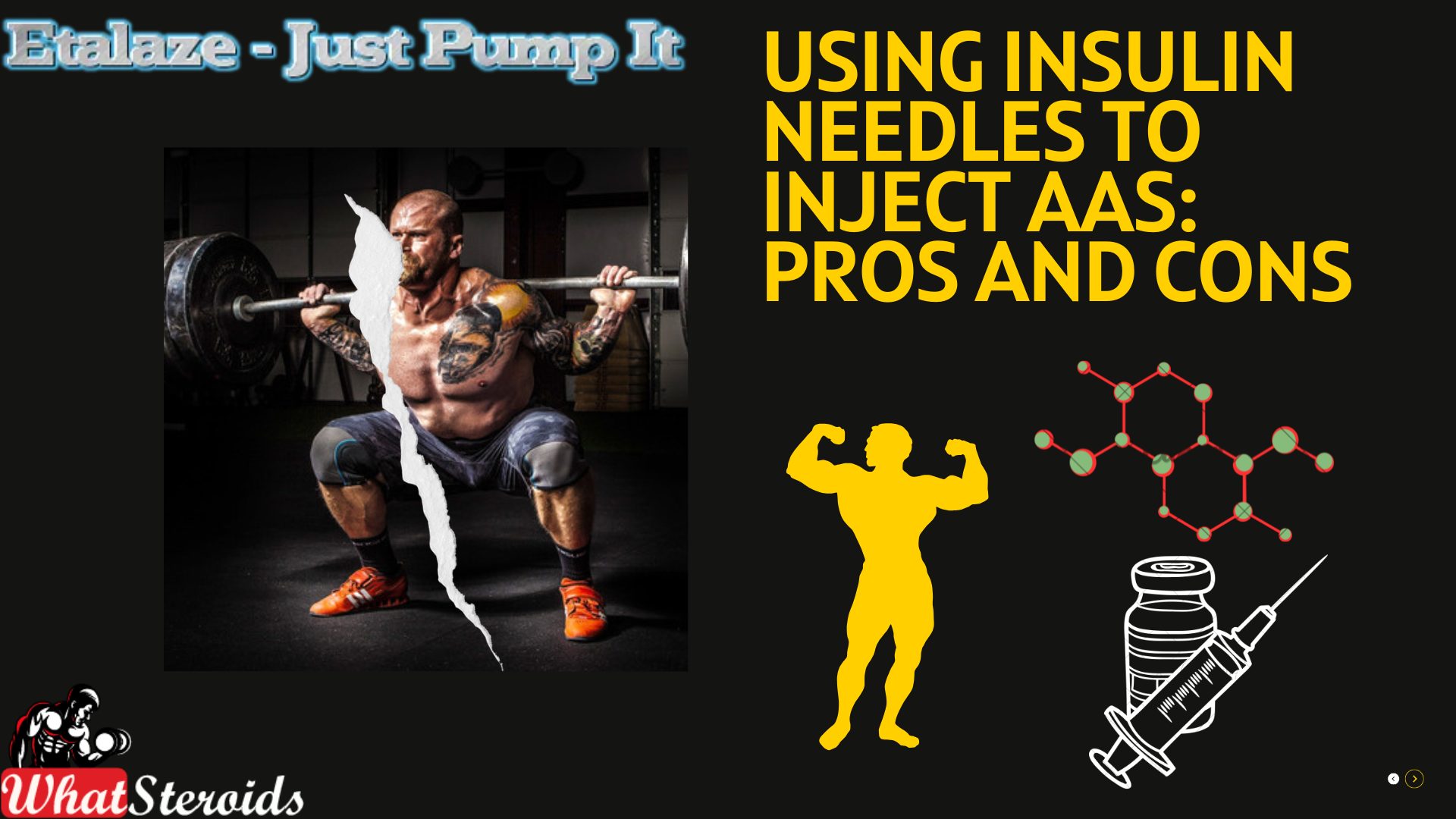
Bodybuilding has long been associated with the pursuit of physical excellence, where athletes and enthusiasts dedicate themselves to sculpting muscular physiques. You need rigorous training, disciplined nutrition, and, in some cases, the use of performance-enhancing substances. Among these substances, anabolic-androgenic steroids (AAS) occupy a controversial space. While medically prescribed for specific conditions, AAS are often used to accelerate muscle growth, improve recovery, and enhance overall performance. Their use, however, is fraught with ethical, legal, and health-related concerns.
One practical issue that arises in this context is the method of administration. AAS are typically injected intramuscularly, requiring needles that can deliver oil-based solutions deep into muscle tissue. Yet, some individuals turn to insulin needles—originally designed for subcutaneous delivery of insulin—as an alternative. This choice is often motivated by the perception that insulin needles are less intimidating, less painful, and more discreet. For bodybuilders who may be inexperienced with injections, the appeal of a smaller, finer needle can be strong.
Click Here to Buy Boldenone Undecylenate 250 mg/ml by Hilma Biocare
However, the suitability of insulin needles for AAS administration is highly debated. While they may offer certain conveniences, their limitations in terms of depth, absorption, and compatibility with thicker solutions raise significant concerns. Misuse can lead to complications ranging from ineffective dosing to infections and tissue damage.
Must Read: Running and Bodybuilding: Is it a Good Idea to Mix Them?
In bodybuilding culture, where experimentation and peer influence often shape practices, understanding the pros and cons of using insulin needles for AAS injections is essential. By examining both benefits and the potential risks, we can better appreciate the complexities of AAS injection and emphasize the importance of informed, responsible decision-making.
Why Insulin Needles
Insulin needles are generally preferred for many types of injections because they are shorter, thinner, less painful, and reduce the risk of complications compared to larger needles
Patient comfort: Insulin needles are designed to minimize pain. Their fine gauge and short length make injections less intimidating and more tolerable, especially for people who need frequent injections.
Reduced risk of complications: Shorter needles lower the chance of hitting muscle or nerves when delivering medication subcutaneously. This reduces risks like bruising, bleeding, or accidental intramuscular injection
Effective delivery: For insulin and other subcutaneous medications, shorter needles are just as effective as longer ones. They ensure the drug reaches the correct tissue layer without unnecessary depth.
Ease of use: Their design makes them simple to handle, even for patients self-administering injections daily. This accessibility encourages adherence to treatment
Compatibility with subcutaneous injections: Many medications besides insulin—such as certain vaccines, hormones, and biologics—are delivered under the skin. Insulin needles are well-suited for these because they match the required depth and absorption rate.
Insulin Needles vs. Intramuscular Needles in Bodybuilding
When it comes to injecting anabolic-androgenic steroids (AAS), bodybuilders often weigh the choice between insulin needles and traditional intramuscular needles. Insulin needles are very fine and short, usually ranging from 29 to 31 gauge and only a few millimeters in length. This makes them far less intimidating and significantly less painful to use. For athletes who inject frequently, the reduced discomfort and minimal scarring are appealing, especially since visible bruising or scar tissue can detract from the aesthetic goals of bodybuilding. Their wide availability in pharmacies and association with legitimate medical use also adds to their convenience and discretion.
However, insulin needles are designed for subcutaneous injections, meaning they deposit medication just under the skin. AAS, on the other hand, are typically oil-based compounds that require intramuscular delivery for proper absorption. The fine bore of insulin needles makes drawing and injecting these thicker solutions difficult, and their short length often fails to reach muscle tissue. This mismatch can lead to poor absorption, underdosing, or even localized complications such as abscesses and tissue irritation.
Intramuscular needles, by contrast, are longer and thicker—usually 21 to 25 gauge and 25 to 40 millimeters in length. While they cause more pain and can be intimidating for beginners, they are specifically designed to deliver oil-based substances deep into muscle tissue. This ensures that AAS are absorbed effectively and reduces the risk of complications when used correctly. Over time, repeated intramuscular injections may cause bruising or scar tissue, but medically they remain the appropriate tool for this type of administration.
In short, you may prefer insulin needles for their comfort, accessibility, and cosmetic advantages, but intramuscular needles remain the medically suitable option for AAS injections. The perceived safety of insulin needles does not outweigh the risks of improper delivery, making the choice more about convenience than effectiveness.
Downsides of Using Insulin Needles for AAS in Bodybuilding
For bodybuilders, the downsides of insulin needles in AAS use are significant: poor absorption, infection risk, tissue damage, and wasted product. While they may reduce pain and appear more convenient, they compromise both safety and effectiveness. In bodybuilding culture, where results are paramount, these drawbacks make insulin needles a risky and counterproductive choice.
Improper absorption
Insulin needles are designed for subcutaneous injections, but AAS typically require intramuscular delivery. Injecting into fat or shallow tissue can lead to poor absorption, reduced effectiveness, and unpredictable results.
Also See: Fitness Lessons from A Navy Seal’s Training Routine
Viscosity mismatch
AAS solutions are often oil-based and much thicker than insulin. Fine-gauge insulin needles struggle to draw and push these solutions, leading to blocked syringes, incomplete injections, or excessive force that damages tissue.
Risk of infection and abscesses
Because oil may pool in subcutaneous tissue instead of dispersing into muscle, it can irritate the area and create a breeding ground for bacteria. This raises the risk of painful abscesses that may require medical intervention.
Underdosing and wasted product
If the steroid doesn’t reach the muscle, the bodybuilder may not achieve the intended anabolic effect. This not only wastes expensive compounds but also tempts users to increase frequency or dosage, compounding health risks.
Tissue damage
Repeated shallow injections can cause lumps, irritation, or necrosis in fatty tissue. For bodybuilders focused on aesthetics, visible damage under the skin undermines their goals.
False sense of safety
Many athletes assume insulin needles are “safer” because they are smaller and widely used in diabetes care. In reality, this perception can mask the fact that they are medically inappropriate for AAS, leading to dangerous practices.
Related Article: Best Syringes for Steroid Injection on Amazon
Overall
Bodybuilders and athletes often face difficult choices when it comes to performance enhancement, and the method of administering anabolic-androgenic steroids (AAS) is one of them. Insulin needles, with their fine gauge and short length, are attractive because they reduce pain, minimize scarring, and are easy to obtain. For individuals who inject frequently, these qualities can seem like practical advantages.
However, the reality is that insulin needles are not designed for oil-based compounds that require intramuscular delivery. Their short length and narrow bore make them unsuitable for reaching muscle tissue, leading to poor absorption, underdosing, and potential tissue irritation. The risk of infection or abscess formation is also heightened when AAS are deposited into fatty tissue rather than muscle. What may appear to be a safer, more comfortable option can ultimately compromise both health and performance outcomes.
Athletes who prioritize long-term progress must recognize that convenience should never outweigh safety. While insulin needles may seem appealing, they are not always appropriate for AAS administration. The discipline that defines bodybuilding and athletic success should extend to responsible decision-making, ensuring that choices made in pursuit of strength and aesthetics do not undermine overall well-being.
-
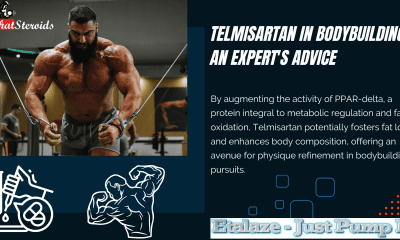
 Bodybuilding Products2 years ago
Bodybuilding Products2 years agoTelmisartan In Bodybuilding: An Expert’s Advice
-
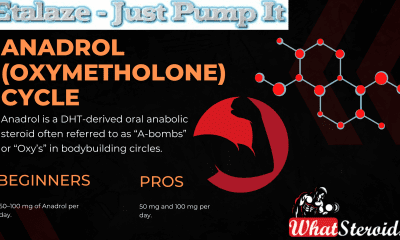
 Steroids2 years ago
Steroids2 years agoAnadrol Cycle: Benefits, Doses, Alternatives, etc.
-
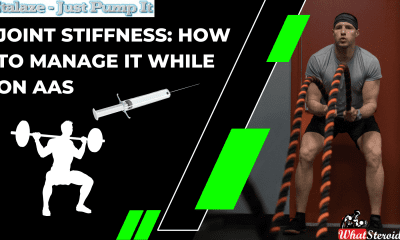
 Anabolic Steroids1 year ago
Anabolic Steroids1 year agoJoint Stiffness: How to Manage It While on AAS
-
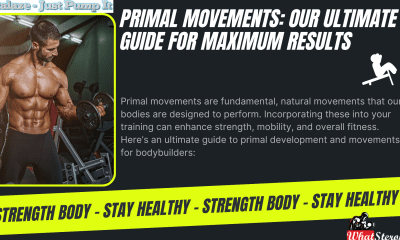
 Bodybuilding1 year ago
Bodybuilding1 year agoPrimal Movements: Our Ultimate Guide for Maximum Results
-
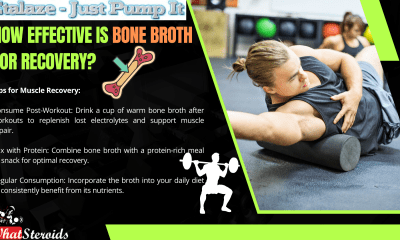
 Bodybuilding1 year ago
Bodybuilding1 year agoHow Effective is Bone Broth for Recovery?
-

 Steroids1 year ago
Steroids1 year agoBodybuilder Winter Clothing: Staying Warm and Stylish
-
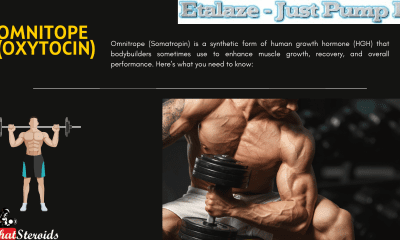
 Steroids2 years ago
Steroids2 years agoOmnitope (Oxytocin)
-
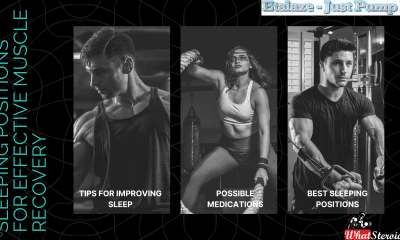
 Steroids1 year ago
Steroids1 year agoSleeping Positions for Effective Muscle Recovery
-

 Bodybuilding2 years ago
Bodybuilding2 years agoHow Much Is Too Much Cardio? Understanding Heart Rate Zones
-
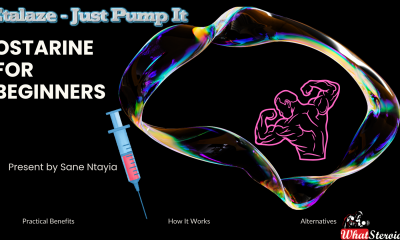
 Steroids1 year ago
Steroids1 year agoOstarine For Beginners: The Ultimate Guide
-
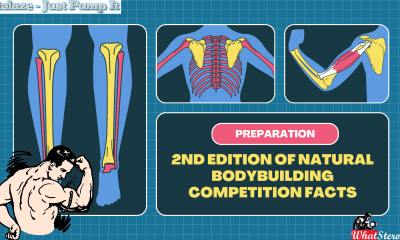
 Bodybuilding1 year ago
Bodybuilding1 year ago2nd Edition of Natural Bodybuilding Competition Facts
-
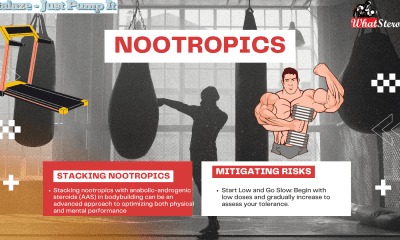
 Bodybuilding1 year ago
Bodybuilding1 year agoAre Nootropics a Better Option to AAS?
-

 Bodybuilding1 year ago
Bodybuilding1 year agoTop Video Games for Bodybuilders in 2025
-
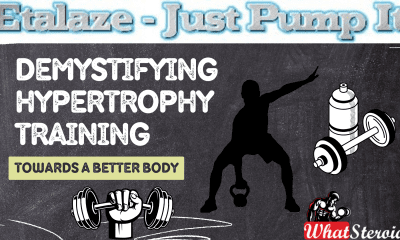
 Bodybuilding2 years ago
Bodybuilding2 years agoDemystifying Hypertrophy Training
-
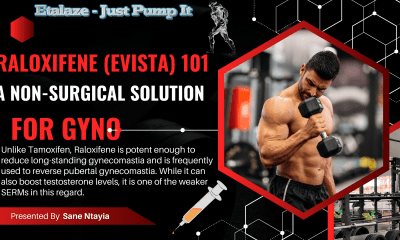
 Steroids10 months ago
Steroids10 months agoRaloxifene (Evista) 101: A Non-Surgical Solution for Gyno
-
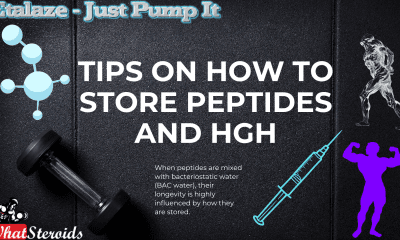
 Steroids12 months ago
Steroids12 months agoTips on How to Store Peptides and HGH
-
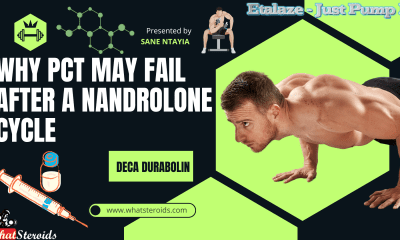
 Steroids11 months ago
Steroids11 months agoWhy Post-Cycle Therapy (PCT) Fails After a Nandrolone Cycle
-

 Beginners1 year ago
Beginners1 year ago14 Morning Run Safety Tips for Bodybuilding and Fitness
-
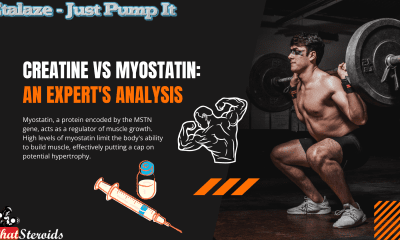
 Steroids10 months ago
Steroids10 months agoCreatine vs Myostatin: An Expert’s Analysis
-
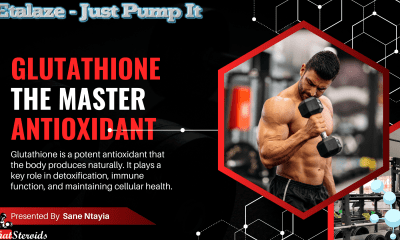
 Steroids1 year ago
Steroids1 year agoGlutathione – The Most Underrated Antioxidant
-
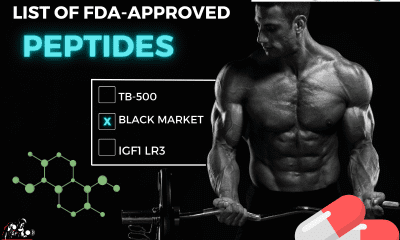
 Bodybuilding2 years ago
Bodybuilding2 years agoList of FDA-Approved Peptides
-

 Product Reviews2 years ago
Product Reviews2 years agoTop Vitamins for Skin Health
-

 Anabolic Steroids2 years ago
Anabolic Steroids2 years agoHow Much Do You Know About B-AET? A Fat Burner You’ve Been Missing
-
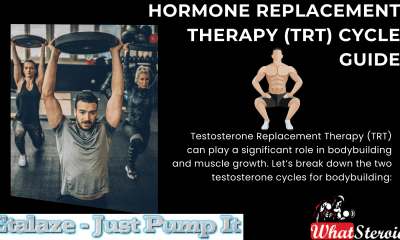
 Bodybuilding2 years ago
Bodybuilding2 years agoHormone Replacement Therapy (TRT) Cycle Guide
-

 Anabolic Steroids2 years ago
Anabolic Steroids2 years agoAnavar Cycle for Men and Women








